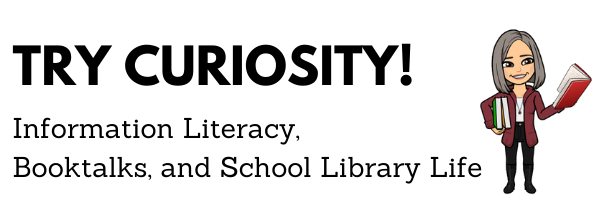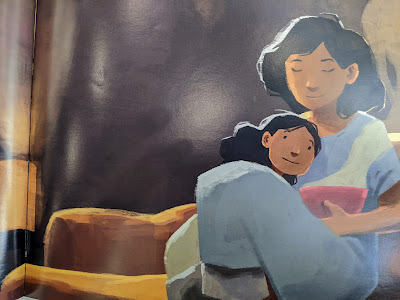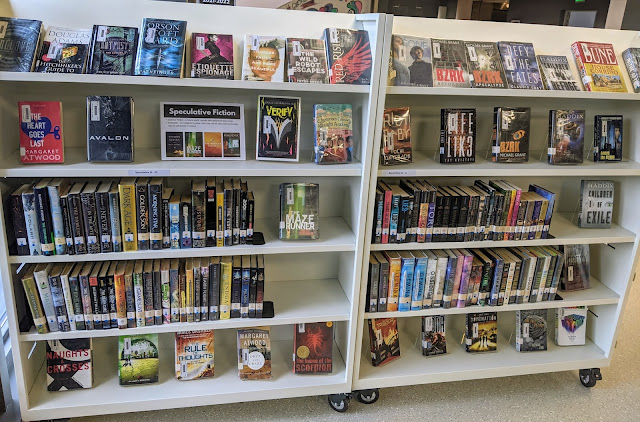What’s the “Jarul” Award?The Jarul Award aims to promote picture books by Indian authors and/or publishers each year. They put out a longlist of titles, and students ages up to 11 vote to create a shortlist of three winners. The final winner is voted on at the end of the year and announced at a ceremony at The American School of Bombay in January.
As a newbie to India, each of these was an eye-opener for me and all of them would be good choices for any kind of lesson or read-aloud about empathy. Several of them tie to the UN Sustainable Development Goals as well.
Here are my short summaries of each book. Click each cover for more information via Goodreads. See my favorite at the end.
Machher Jhol, by Richa Jha and Summanta Dey
A boy is worried about his grandfather, his “Baba”, and goes in search of his favorite food called Machher Jhol, a fish curry. He ventures farther on his own than ever before but uses what he has learned from his grandfather as a guide - selecting the freshest fish by smell, finding the market by the noises around him.
Once he’s home, his family is a bit angry with him for leaving but they’re also proud to realize he navigated by himself even though he’s blind. The surprise ending and the realistic illustrations gave me chills.
Illustrations are finely detailed paintings of street scenes in an unnamed city in India.
Ritu Weds Chandani, by Ameye Narvankar
Ritu is marrying her girlfriend and the community is not supportive. Her family is, however, and we hear about various Indian wedding traditions as the celebrations begin.
Unfortunately, some in the community actively try to stop the bride from leading her own baraat or wedding procession. The disruption of the event is shocking and upsetting to the little niece who narrates the story. She stands up to the crowd and asserts that the love of her aunt Ritu and her new wife Chandani is just as real as any other love.
Illustrations are a graphic style with natural tones. The illustrations are upbeat and lively so even though there are some upsetting moments, the illustrations keep the mood relatively light.
Aai and I, by Mamta Nainy and Sanket Pethkar
A girl is separated from her mother while the mom is being treated for cancer. When the mother returns her hair is cut short (the images do not show the mother’s head as being bald, so this is somewhat unrealistic).
The girl is disappointed about the mother not having her long hair and tries to fix the problem by having her wear hats or scarves, but the mother resists and says she’s happy with her new hair. The girl wants to match with her mom, so she cuts her hair too.
Illustrations are bold and brightly colored domestic scenes and close-ups of the girl and her mother and...the family dog!
Sometimes Mama, Sometimes Papa, by Nandini Nayar and Upamany Bhattacharyya
Keya’s parents have separated so she is adjusting to her new life where some things are with Mama and others are with Papa. She’s taking a positive spin and seeing this new life as more expansive - more choices for in packed lunch, more different stories at bedtime.
But difficulties surface too; will she need to choose which parent will come to school events? Will her parents be able to be together at times to celebrate her accomplishments? It seems that all will be ok for her, since Mama and Papa are both always there for her.
Illustrations are paintings of what’s going on in her mind and various scenes from school and home where she feels suspended between her two homes.
Giggi and Daddy, by Richa Jha and Mithila Ananth
Giggi’s daddy likes to tell her wild stories about himself when he was expecting her arrival - how share grew inside his pocket, and how he went to a special school to learn how to be a good daddy. His stories extend to when she was a baby and all of the things he did as a perfect daddy, like give her a dinosaur for her birthday and have a picnic in space.
She knows he didn’t do ALL of those things, but he likes to pretend. When she laughs at his story as if it’s not real, he gets sad. So she tells HIM a story about how he’s the best daddy she could ever wish for.
Colorful cartoony illustrations enhance the story by showing what’s real and what’s imagined.
My Name is Gulab, by Sagar Kolwankar
A girl named Gulab is bullied at school and called “stinky” because her father has a job working in the sewers. This is the job he and generations before him have had due to the limitations of the family’s caste.
The injustice of it all spurs Gulab into action to make a machine that will clean gutters instead, and she presents it to her teacher and peers at their annual Science Fair. The harsh reality of the father’s job told in full smelly detail is an eye-opening experience for privileged readers.
Illustrations are expressive cartoon-style drawings.
A Home of Our Own, by Meghaa Gupta and Habib Ali
A group of children earn bits of money or objects in exchange for doing menial tasks. They delight in using the objects, along with other rejected items they find in the streets to “play house” and create the home of their dreams.
Their simple joy about a chipped bowl or a cardboard box as a fake TV makes this a poignant read about poverty and the joy that still can exist despite unimaginable living conditions.
Watercolor pencil illustrations match the light-hearted tone of the children’s playtime.
Paati’s Rasam, by Janaki Sabesh and Dhwani Sabesh, and Palavi Jain
A girl loves her time with Paati, her grandmother, and especially loves her rasam - a South Indian chunky soupy dish that’s a popular comfort food. Her grandmother promises she’ll teach her how to make it, but she dies before she has the opportunity.
As the little girl grieves for her grandmother, she’s going through some things that spark memories of her, and pulls out her grandmother’s most beautiful saree. Out falls the recipe for her rasam and in the act of making the familiar dish, the girl’s grieving process begins to turn toward healing.
Illustrations are dark lined with colored pencil and watercolor - really vibrant and expressive scenes.
Just Like Papa, by Nandita da Cunha and Shreya
Mumbai author. Gia loves to watch her father work in his studio on his paintings. She dreams of the day when she can draw and paint just like he does. But when she finally gets all of the supplies she needs to be a real artist, she can’t seem to create artwork that matches her imagination and ideas.
It’s frustrating until she comes to realize that HER version of art comes through story. She and Papa can now collaborate as her images told in words become his newest paintings!
The illustrations are done in a childlike manner which makes it seem like the character Gia illustrated her own story.
I am So Much More Than the Colour of My Skin, by Divya Thomas and Ruchi Shah
This series of short poems inspires us to remember that skin color is not a definition of who we are. On each page, we see a new child with a different shade of skin and what that shade matches (stone brown, sandy brown, warm honey…). Each child is doing something s/he is passionate about like soccer, painting, or something s/he is dreaming of for the future like being a politician, taking care of the Earth, and such.
It does a beautiful job of tapping into the idea of pursuing one’s dreams and interests despite any negative or racist talk that may come along.
The illustrations are cartoony with mixed media elements to bring extra warmth and realism to the page. Each page includes a photo on a paint-chip style card that shows the color in real life.
In Summary…If I had had to pick just one book for a school library looking to expand its collection of global literature through picture books, I would choose Machher Jhol due to its fine illustration, emotional reaction from the reader, and immersive feeling of the culture. A stunningly beautiful book. Too bad the voters didn’t agree with me! I wish the publishers had chosen a different cover - I think it would have been more popular.
The Shortlist
The top three chosen by Primary students (up through grade 6)

The final vote for the #1 book will close on December 24 and the winner will be announced on January 28 at the Jarul Award Ceremony held at the American School of Bombay.
Further Reading







































